
Leuven, also called Louvain, is the capital and largest city of the province of Flemish Brabant in the Flemish Region of Belgium. It is located about 25 kilometres east of Brussels. The municipality itself comprises the sub-municipalities of Heverlee, Kessel-Lo, Leuven proper, Wilsele, Wijgmaal and part of Haasrode and Korbeek-Lo. It is the eighth largest city in Belgium, with more than 100,244 inhabitants.
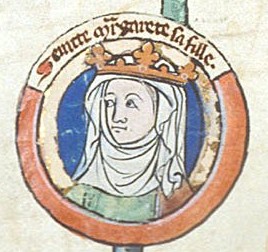
Saint Margaret of Scotland, also known as Margaret of Wessex, was an English princess and a Scottish queen. Margaret was sometimes called "The Pearl of Scotland". Born in the Kingdom of Hungary to the expatriate English prince Edward the Exile, Margaret and her family returned to England in 1057. Following the death of Harold Godwinson at the Battle of Hastings in 1066, her brother Edgar Ætheling was elected as King of England but never crowned. After she and her family fled north, Margaret married Malcolm III of Scotland by the end of 1070.
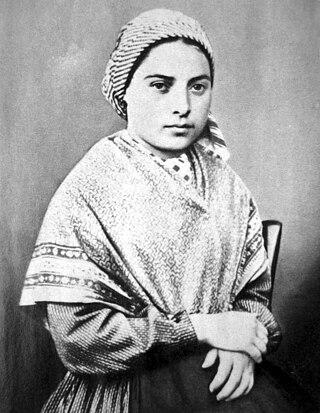
Bernadette Soubirous, also known as Bernadette of Lourdes, was the firstborn daughter of a miller from Lourdes, in the department of Hautes-Pyrénées in France, and is best known for experiencing apparitions of a "young lady" who asked for a chapel to be built at the nearby cave-grotto. These apparitions occurred between 11 February and 16 July 1858, and the young lady who appeared to her identified herself as the "Immaculate Conception".
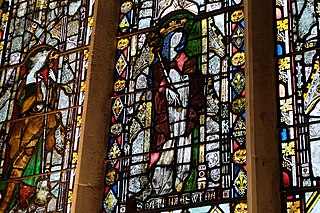
Frithuswith, commonly Frideswide, was an English princess and abbess. She is credited as the foundress of a monastery later incorporated into Christ Church, Oxford. She was the daughter of a sub-king of a Mercia named Dida of Eynsham whose lands occupied western Oxfordshire and the upper reaches of the River Thames.

Werburgh was an Anglo-Saxon princess who became the patron saint of the city of Chester in Cheshire. Her feast day is 3 February.

John Berchmans, SJ was a Jesuit scholastic and is revered as a saint in the Catholic Church.
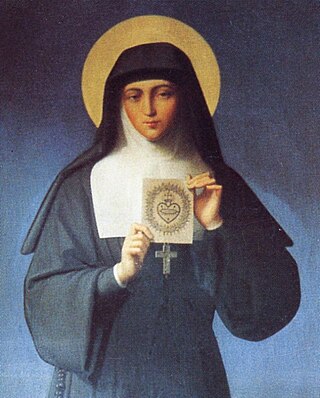
Margaret Mary Alacoque, VHM was a French Visitation nun and mystic who promoted devotion to the Sacred Heart of Jesus in its modern form.

Margaret of Città di Castello, TOSD was an Italian Catholic educator and a Dominican tertiary. Margaret had disabilities and became known for her deep faith and holiness.

Saint William of Perth, also known as Saint William of Rochester was a Scottish saint who was martyred in England. He is the patron saint of adopted children. Following his death, he gained local acclaim and was canonised by Pope Alexander IV in 1256.

Petronilla is an early Christian saint. She is venerated as a virgin by the Catholic Church. She died in Rome at the end of the 1st century, or possibly in the 3rd century.
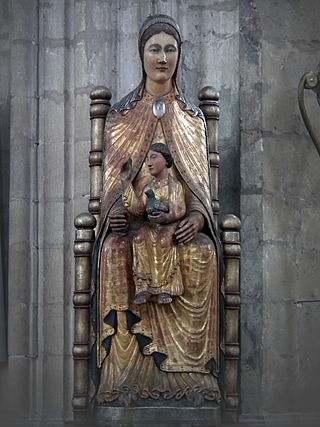
The Sedes Sapientiae, also known as Our Lady of Leuven, is a Medieval wooden statue of the Virgin Mary located at St Peter's Church in Leuven, Belgium. It was carved in 1442 by Nicolaas De Bruyne as an enlarged copy of an earlier statue from the 13th century. The polychromy was done by Roelof van Velpen. It was restored in 1842 and 1945. A longstanding local landmark, the statue was depicted on the seals of the Katholieke Universiteit Leuven and UCLouvain.
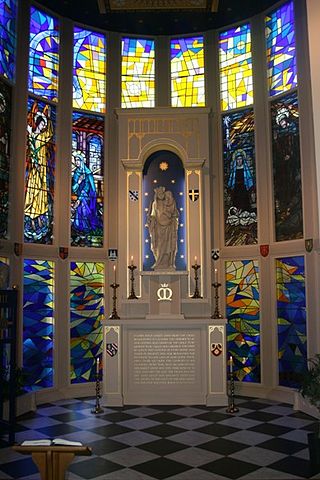
Our Lady of Doncaster is a Marian shrine located in Doncaster, South Yorkshire, England. The original statue in the Carmelite friary was destroyed during the English Reformation. A modern shrine was erected in St Peter-in-Chains Church, Doncaster in 1973. The feast day of Our Lady of Doncaster is 4 June.

The National Shrine of Saint Elizabeth Ann Seton is a U.S. religious site and educational center in Emmitsburg, Maryland, that pays tribute to the life and mission of Elizabeth Ann Seton, the first native-born citizen of the United States to be canonized by the Roman Catholic Church. It is both a minor basilica and a national shrine.

Magnificent Corpses: Searching Through Europe for St. Peter's Head, St. Claire's Heart, St. Stephen's Hand, and Other Saintly Relics (1999) is a book written by Anneli Rufus, concerning relics enshrined in Europe's churches and cathedrals. Rufus relates the stories behind the saints memorialized and the history of relic veneration. As a non-Catholic, she also describes her experiences of visiting the reliquaries of various saints and the pilgrims that still visit them.

The Chest of Saint Simeon or Saint Simeon's Casket is a rectangular cedarwood sarcophagus in the shape of a chasse, overlaid with silver and silver-gilt plaques, said to hold the relics of St Simon the God-receiver; it is located over the main altar in the Church of Saint Simeon in Zadar, Croatia. The chest, considered a masterpiece of medieval art and also a unique monument of the goldsmith's craft of the age, is one of the most interesting works in gold in Europe now under the protection of UNESCO. It was made by local goldsmiths to an Italian design between 1377 and 1380.

Barbora of Žagarė was a Roman Catholic laywoman from Žagarė, then Grand Duchy of Lithuania. According to oral history, Barbora distinguished herself by her Christian virtues and died young under obscure circumstances. Her remains were said to be incorruptible. This inspired a strong following among local people, and numerous miracles are attributed to her. In 2005, the Diocese of Šiauliai began the beatification process, calling her a Servant of God.

Jan Rombouts the Elder, Jan Rombouts (I) (c. 1480 in Leuven – 1535 in Leuven), was a Flemish Renaissance painter, glass painter, draftsman, printmaker and glass designer. The subjects of his work are stories from the Old and New Testament and the lives of Christian saints. He was active in Leuven where he introduced the Renaissance innovations of Bernard van Orley and the Antwerp school.
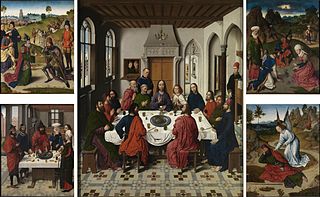
Altarpiece of the Holy Sacrament or Triptych of the Last Supper is a 1464–1468 dated folding triptych with at least five panel paintings attributed to the Flemish painter Dieric Bouts, now reassembled and held at its location of origin in the eastern choir chapel of St. Peter's Church, Leuven, Belgium.

The Martyrdom of Saint Erasmus is a triptych panel painting by the Flemish painter Dieric Bouts in the collegiate church of Saint Peter's in Leuven, Belgium. It commemorates the martyrdom and death of a European Christian figure from the fourth century, Saint Erasmus. It shows the Emperor Diocletian as one of four observers in the background of the center panel, as well as Saints Jerome and Bernard of Clairvaux in the wings of the altarpiece. All nine figures appear to express an exceptional tranquility and calm, in a landscape setting that is contiguous across the three panels.
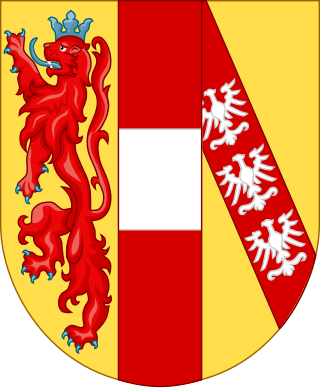
Maria-Anna Galitzine, also known as Archduchess Maria-Anna of Austria and Princess Maria-Anna Galitzine, is a Belgian traditionalist Catholic activist and member of the House of Habsburg-Lorraine. A granddaughter of Charles I of Austria and Zita of Bourbon-Parma, the last emperor and empress of Austria-Hungary, she has been active in supporting their cause for sainthood in the Catholic Church.






















